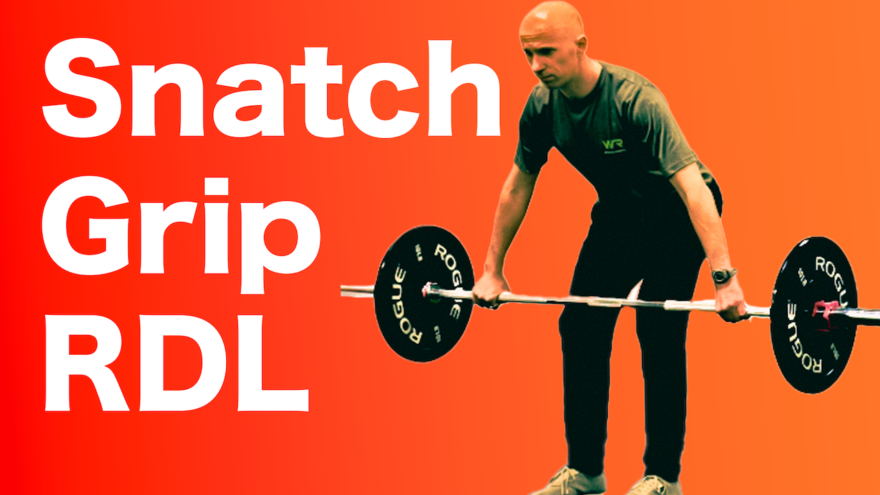Table of Contents
A great beginning deadlift variation
Looking to learn how to deadlift but unsure where you should start?
Are you or your client thinking: “YOU WANT ME TO MOVE MY HIPS HOW?”
Then fam, the snatch grip RDL might be the perfect deadlift variation to start with.
If you are unsure why this version is great, when it should be programmed, or how in the heck to do it, don’t worry, ya boi Big Z has you covered!
Check out the video and post below to learn all about the awesomeness that is the snatch grip RDL.
Snatch Grip RDL biomechanics
When you grasp the biomechanics of this move, you’ll know why it’s great at crushing the hamstrings, and how you can get an added bonus of improving mobility in certain respects!
Before diving into the lower body biomechanics, we need to look at the thing that separates this RDL variation from all others:
The arm position
The grip/arm position is what makes this RDL such a great starting point.
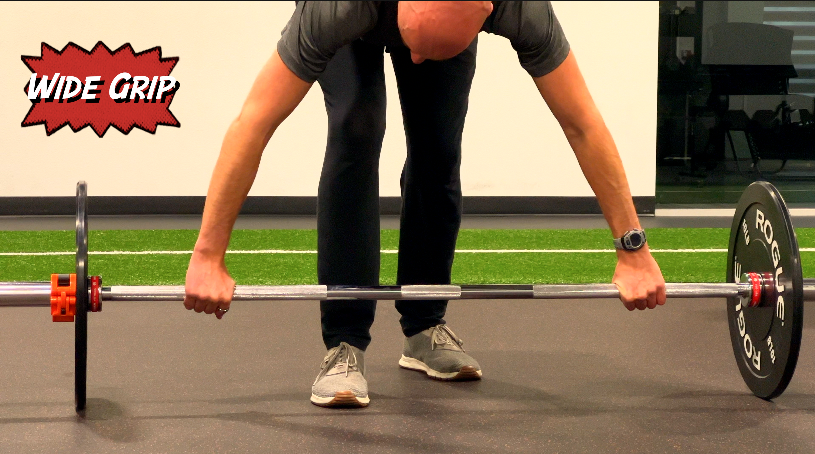
When you utilize a wider grip, it causes the scapulae to abduct and slightly internally rotate away from the midline.
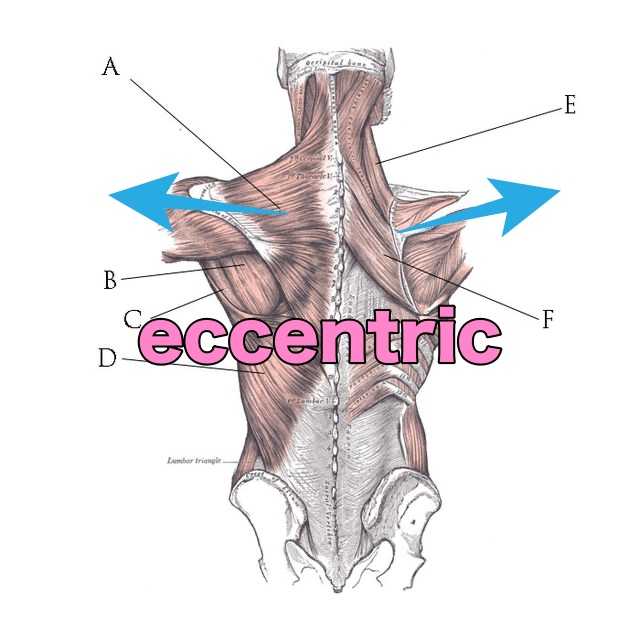
When the shoulder blades are in this position, the upper back musculature becomes eccentrically positioned. Breathing when in this state can increase upper back mobility (posterior thorax expansion).
So what? How does this relate to my lower body?
It turns out, fam, your thoracic spine and sacrum (tailbone area in your pelvis) have similar structure and behavior. If I move the former, it will have a downstream effect on the latter.
What this means for you is it creates some increased range of motion and space on the posterior (backside) aspect of the body; making it easier for the hinge action to occur.
If there isn’t enough motion to hinge backward, the chances of cheating and the task difficulty go THROUGH THE ROOF.
This simple arm position better isolates the RDL to what you actually want: moving the hips backward to engage the hamstrings.
All of the above presupposes one #majorkey about this lift, however:
There has to be a “stack”
Meaning, the pelvis and lower ribcage position have to be “atop” one another.
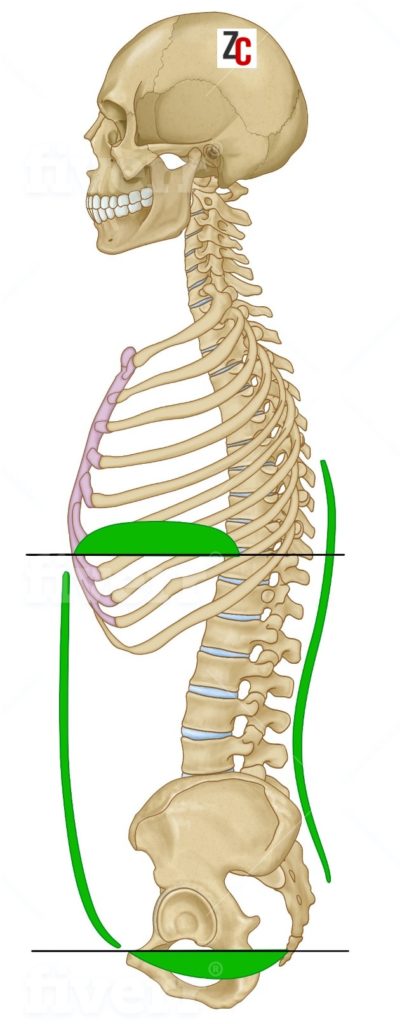
When this position is present, you maximize the hips traveling backward and limit the odds of excessive arching or over flexing.
Now, let’s look at the two movement-based phases of the snatch grip RDL:
Snatch Grip RDL eccentric biomechanics
The eccentric portion is where the pelvis moves backward and you get that nasty hamstring stretch.
But what’s actually going on within the body here?
In order for my hips to travel backward, I have to alter pelvic floor muscle activity in a manner that encourages this action. Meaning, the posterior pelvic floor needs to be in an eccentric position.

The above pelvic floor orientation is represented by sacral nutation.

When the sacrum nutates, you can see the tailbone orient in a manner that would encourage two things:
- Horizontal (backward) pelvic movement
- Femoral internal rotation
To maximize horizontal displacement, I need to have the rest of the spine bend forward. In order for the spine to bend forward, I have to have space available on the anterior (front) portion of my body.
The way I can create space here is by pushing a bit of air in my lungs and some of my abdominal contents forward.
To create the above action, I need to create a relative concentric posterior spine position from our starting point. This position encourages pushing the “stuff” mentioned above forward, which encourages an eccentric position of the anterior aspect of my body.
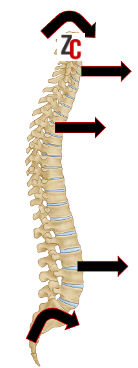
An eccentric frontside is what creates the space needed for the spine to bend forward without overloading any one specific area.
The summation of these actions helps place the distal (lower) glutes and proximal (higher) hamstrings on stretch (eccentric), loading like WHOA.
Snatch Grip RDL concentric biomechanics
The concentric phase involves returning to the start position by flipping the actions of the distal glutes and proximal hamstrings–concentric like cray cray.
However, you do not see the pelvic and spinal orientations flip. If you did, you’d see an incredibly rounded spine as you finish.
What we see instead is the axial skeleton maintains its position: sacral nutation and concentric posterior.
With seeing the biomechanics at play, we can now determine when in the heck we would use this move!
Programming the Snatch Grip RDL
There are several reasons why you might perform the snatch grip RDL.
If we looked at this from a purely biomechanical lens, we could give this move if we needed the following:
- Increase hip internal rotation from a flexed position (due to the eccentric phase)
- Increase sacral nutation to promote hinging (someone is a good squatter, but lacks hinging motion)
- Increase anterior expansion in the thorax and abdomen (due to spinal position)
Therefore, if someone has decreased internal rotation or hinging capabilities, the snatch grip RDL is a great choice.
But fam, these points are “true” for pretty much any RDL variation. What makes the snatch grip special?
The starting points differentiate this bad boy from the rest. Coupling the grip and stack makes this variation perfect for the following people who do this type of stuff:
- Marked rotational restrictions (loss of external and internal rotation)
- Excessive back arching
- Increased anterior pelvic tilting (magnified hip internal rotation)
- Increased posterior thorax tilting (magnified shoulder external rotation)
Folks, many beginners that you are working with will present with many of these restrictions. So if you want to improve their movement AND get a training effect, the snatch grip RDL is a great first deadlift variation.
Performing the Snatch Grip RDL
There are several important pieces to get the most out of this awesome exercise–aka torching your hamstrings.
Let’s dive into each piece!
Snatch Grip RDL setup
The starting position for this move will really make or break how much you’ll get out of this activity. Let’s dive into the keys:
Snatch Grip RDL grip
The grip ought to be wide as can be. The marker that I typically use is the first ring on the knurling, which is well-beyond shoulder-width apart.
This grip helps encourage the scapulae to abduct, which will promote upper back expansion/stretching. A little bit more upper back range of motion will help reduce any compensations.
Snatch Grip RDL knee position
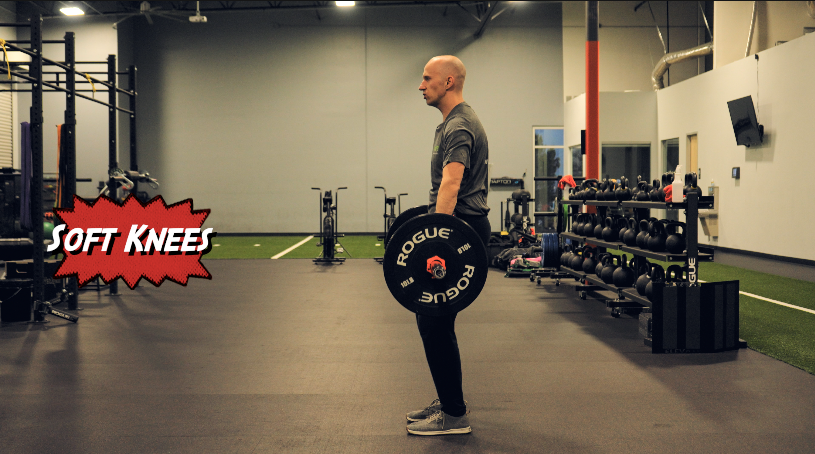
You want a slight knee bend at the start. This helps drive a slight amount of hip external rotation, which minimizes one of the most common compensations–knee hyperextension which creates excessive back arching and anterior pelvic tilt.
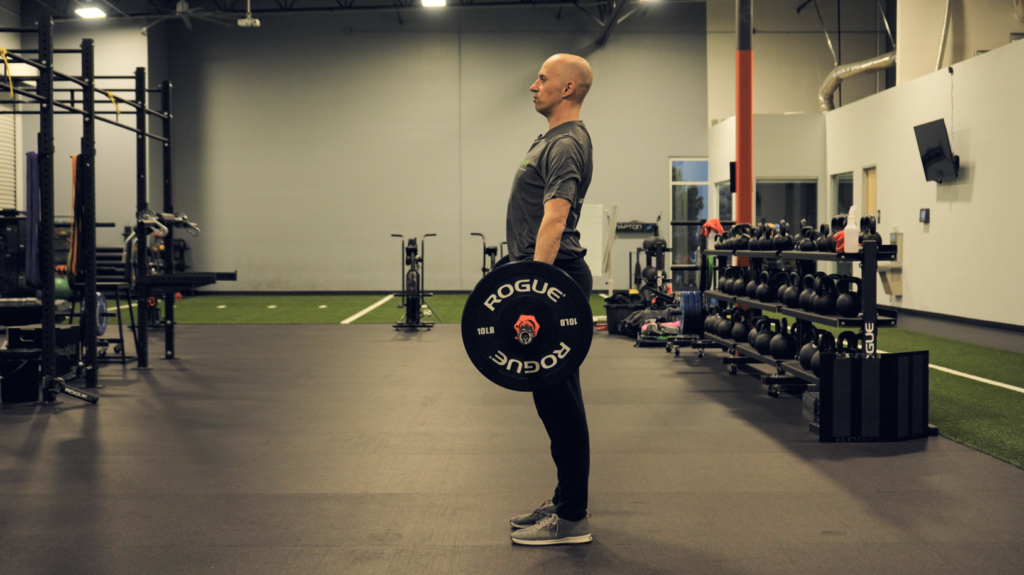
Snatch Grip RDL torso position
Here we want to “stack” the thorax and pelvis. This position helps create a trunk position that encourages a pelvic orientation that does the following:
- Loads the hamstrings effectively
- Distributes workload between front and backside of the body (#nobacksoreness).
The two major keys to performing a stack are as follows:
- Backpockets gently tucked to heels
- Full exhale to make ab wall and lower ribcage smaller
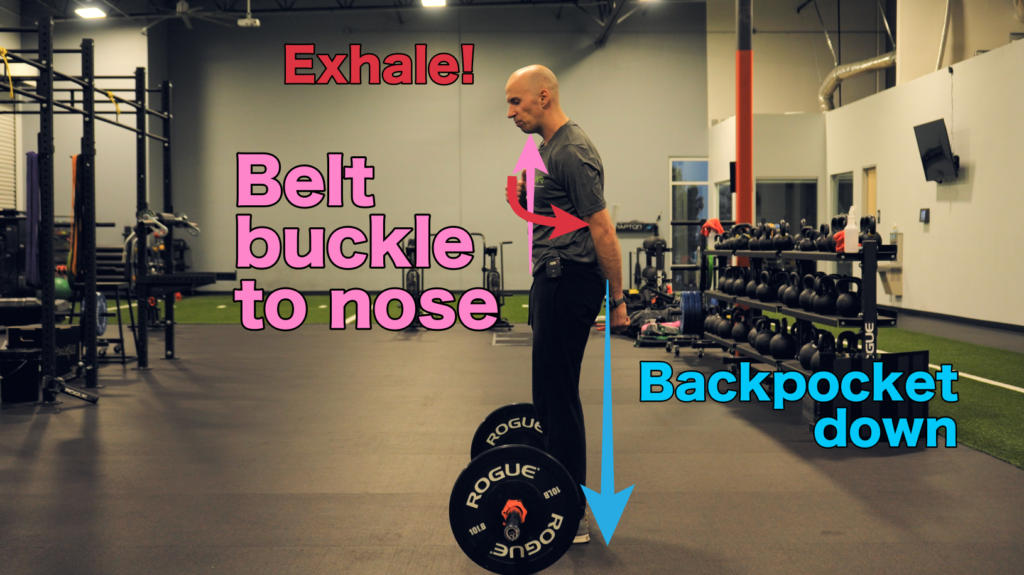
Extra tip – Stay heavy on the heels during this portion, which will further increase hamstring load.
There are several screw-ups that occur at this step:
Overtucking
This action pushes the hips too far forward, which will limit how well you will be able to move your hips backward….Uh, that’s the whole point of the exercise, fam!
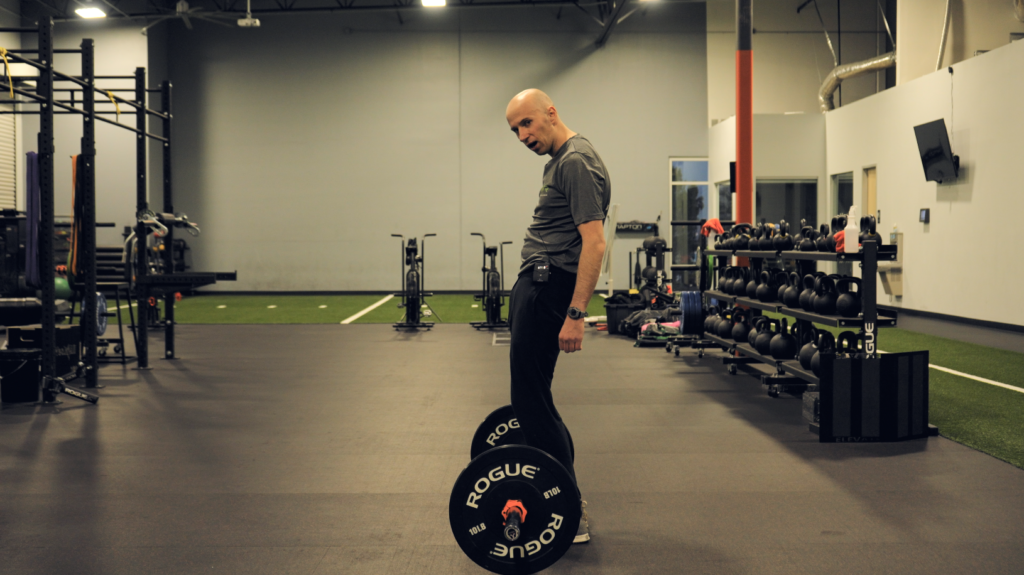
Arching
This action limits abdominal activity, maximal ability to concentrically contract hamstrings, and increases workload through back; which is totally whack!
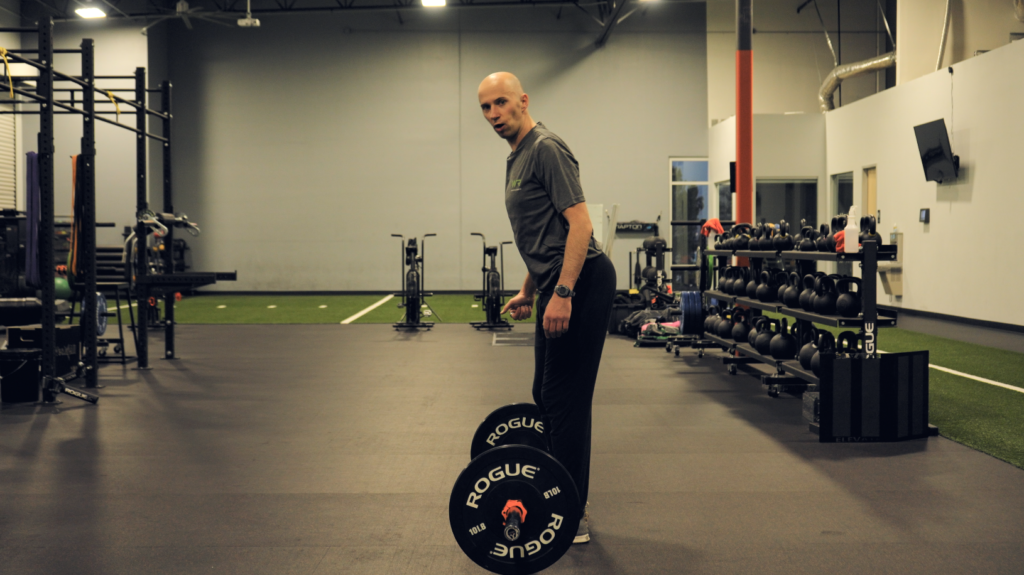
Overexhaling
This action pulls the torso too far down, which creates excessive spinal rounding, limiting how far you’ll be able to push your hips back, and it’ll put your head in a funky position.
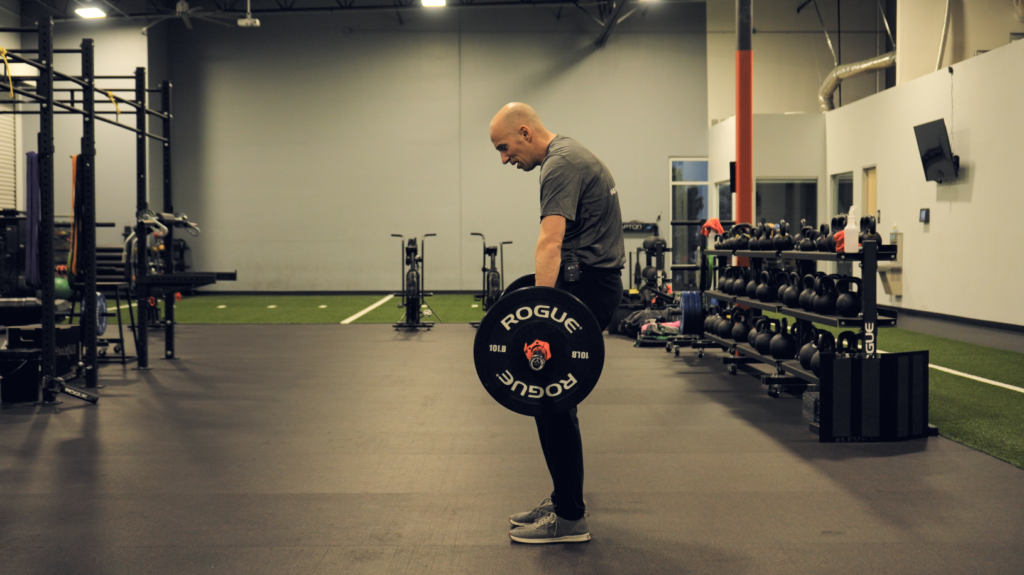
Under Exhaling
This action permits excessive back-arching, which limits your abdominal activity and ability to create a good hamstring gain during the concentric phase of the lift.
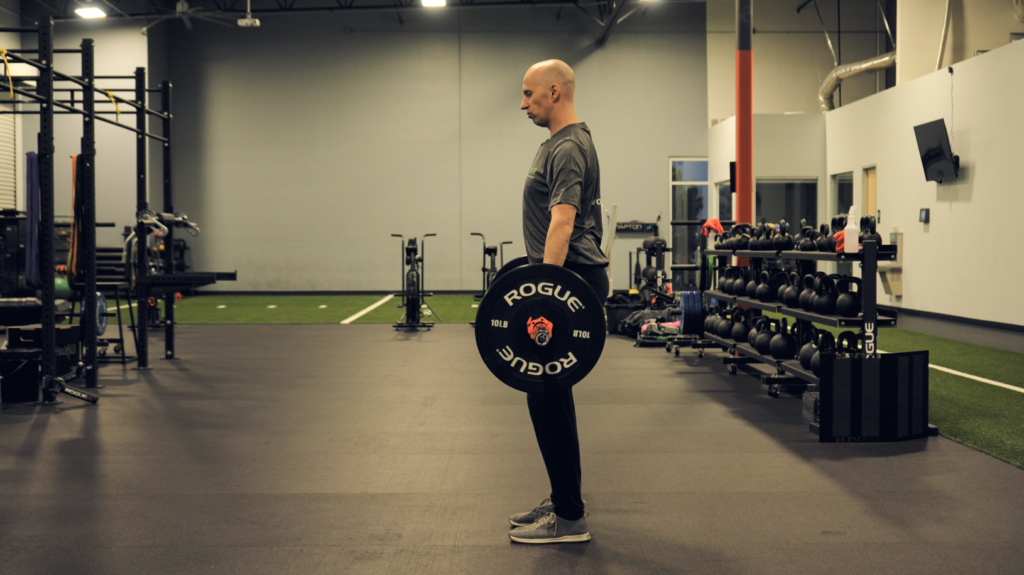
Snatch Grip RDL movement phases
Now it’s time to get that hamstring burn!
Keeping all of the above pieces from the setup, let’s now look at the individual portions of the lift: eccentric and concentric phase.
Snatch Grip RDL eccentric phase
The first step of this phase is to take a silent nasal inhale. This breath will help increase intraabdominal pressure, enhancing hamstring loading and spinal stability during the move.
From here, we start the hinging portion. During the hinge, we want to see a few important pieces:
- Barbell stays close to or resting on thighs
- Push the hips backward
- Head looks slightly up
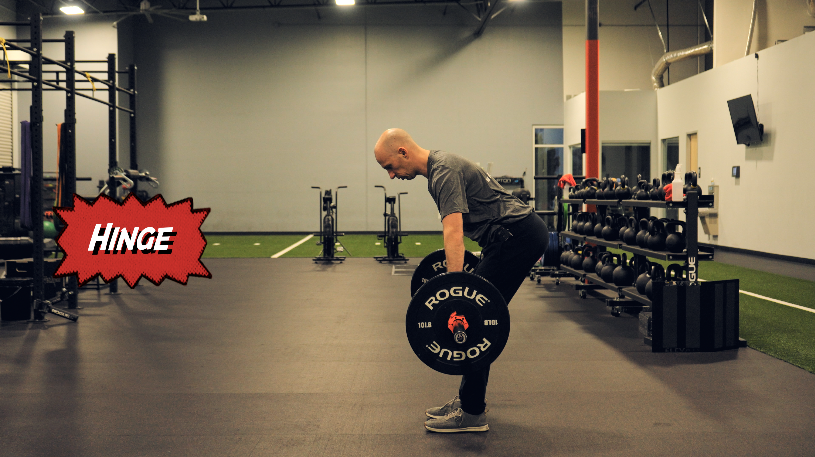
There are several cues I like to coach pushing the hips, the hardest part of the lift to coordinate:
- Karate chop the waist
- Open a door with your rear
Once the hips stop traveling backward, the eccentric phase ends.
Errors during the eccentric phase of the snatch grip RDL
You tell the fam to stop pushing the hips back, but dangit, they end up doing a whole bunch of other stuff to screw up the eccentric portion.
The most common error if someone can actually push the hips back is bending through the waist, often accompanied by knee hyperextension or even the toes lifting off the ground
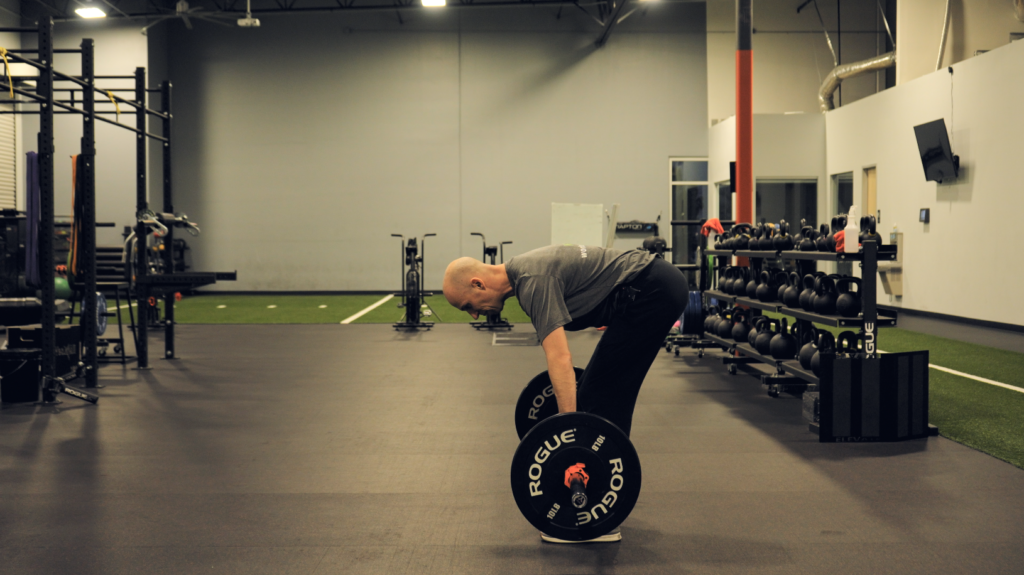
This is whack because now you’ve shifted the workload off of the hammies and onto your back. Great if you are looking for a ripped lower back, but I’m about that hamstring life, yo!
You could also see increased back bending occurring when someone can’t push the hips back. This action sometimes is accompanied by the bar drifting away from the body.
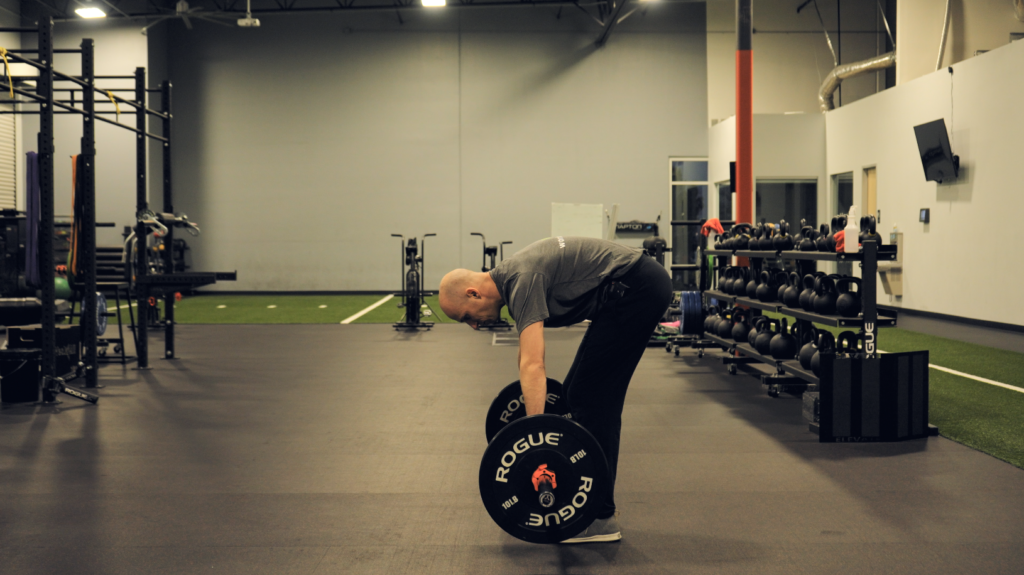
Either of these errors will crush your hamstring loading dreams.
Another issue often seen is losing the stack, which we saw the limitations and reasons why we don’t like that during the under exhaling and arching issue:
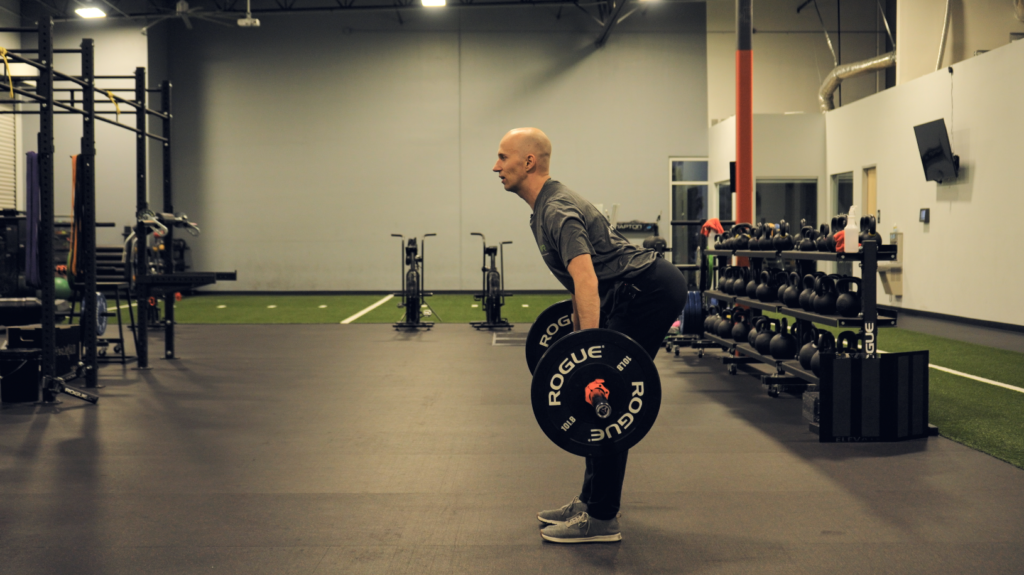
Most of these errors can be remedied by reinforcing the stack and focusing on only letting the hips come back.
There are also issues you can see with head positioning during this phase. Some folks will either have their head looking too far down:
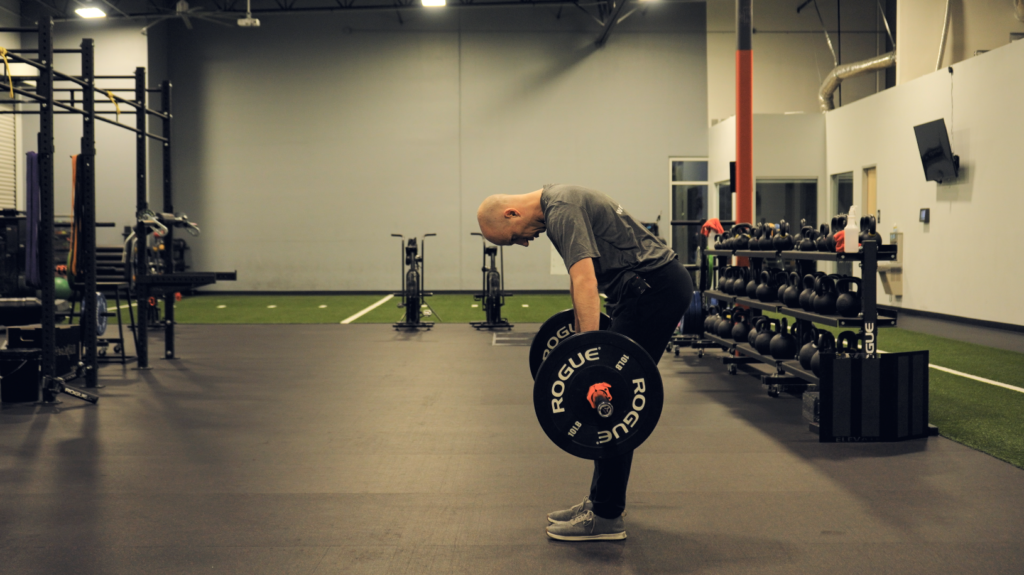
Or too high up
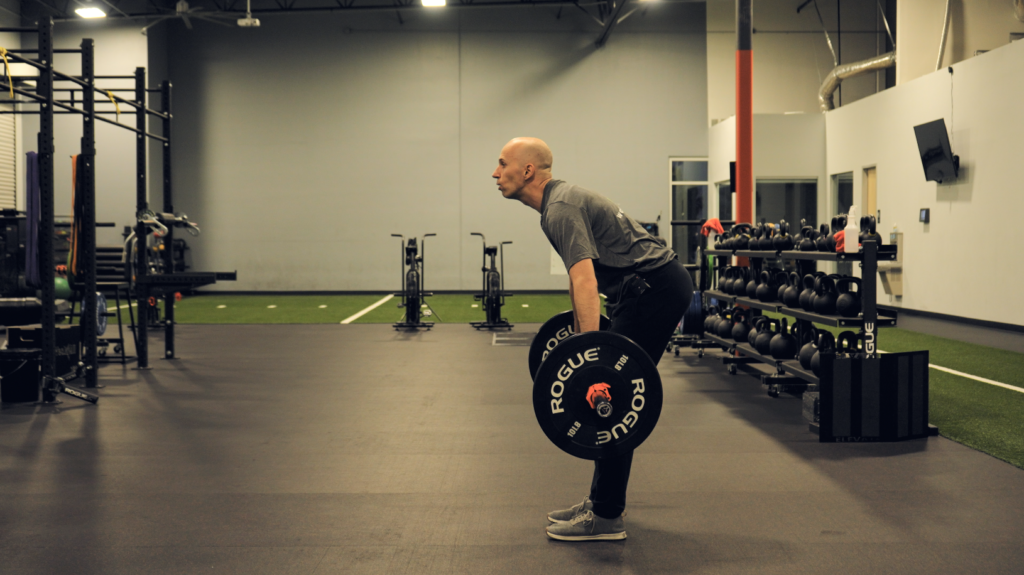
Cueing just to look a little out in front can fix these issues.

Snatch Grip RDL concentric phase
The finish of the lift is pretty straightforward. You want to return to the start position.
When this action is being done, you want to think tall at the top–not excessively squeezing the glutes or anything funky, just finishing tall with the stacked action we mentioned previously. Sometimes cueing backpocket tuck and the top can be useful:
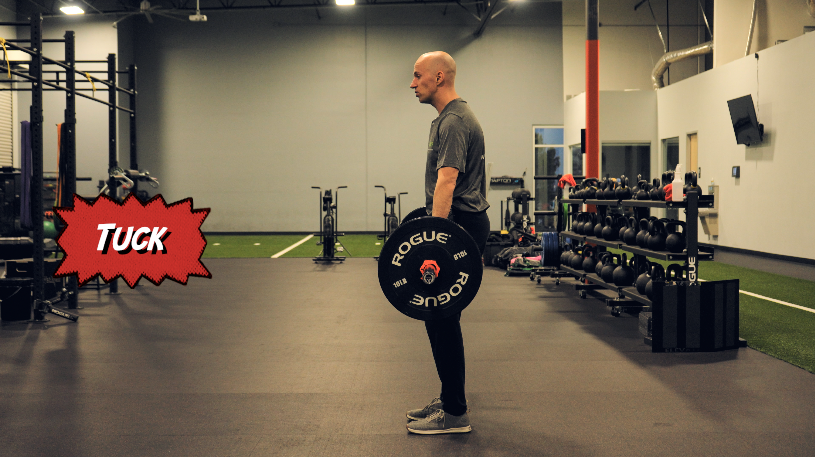
Done right, and you’ll feel the hamstring working.
Errors during the concentric phase of the snatch grip RDL
The biggest errors seen are either over or underfinishing.
First, the overfinish, where the fam squeezes the cheeks HARD at the end, pushing the hips into the bar:

This is a problem because now you’ve put undue stress on your back, and you’ll end up limiting how far you can move back during the eccentric phase.
Less common, you can also see a short finish, which will limit the concentric activity of the hamstrings:
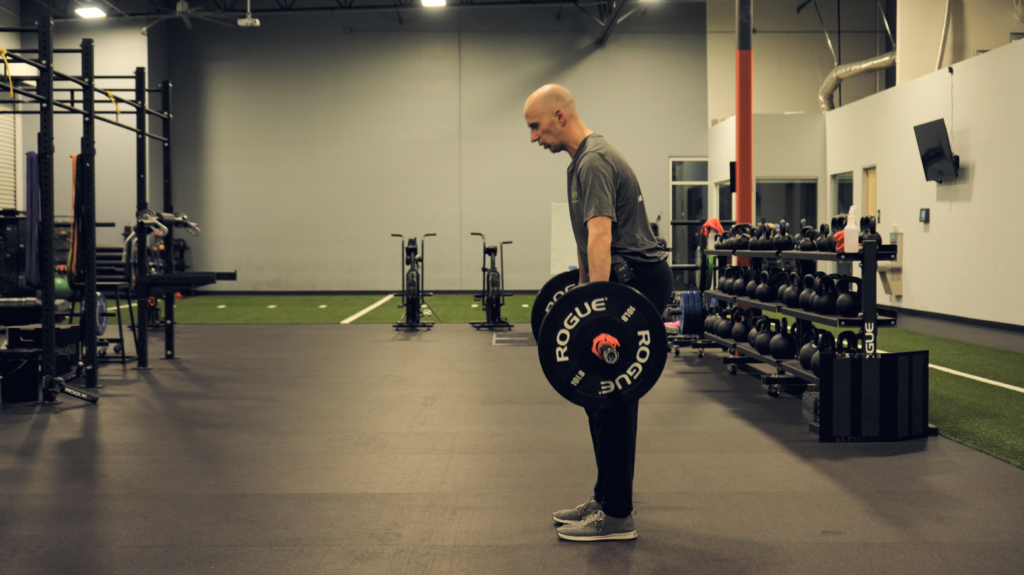
The solution to either of these issues is reinforcing being tall at the top, and not pushing through.
Sum Up
That, my fam, is just about everything you need to know to perform the snatch grip RDL at boss status. Your supreme clientele won’t know what hit em’!
To summarize:
- The snatch grip RDL creates horizontal pelvic displacement from a relatively eccentric posterior spine starting point
- The movement itself works the lower glutes and high hamstrings while maintaining sacral nutation and slightly concentric spinal orientation
- Use this move to improve hip internal rotation and sacral nutation for someone who has multidirectional movement limitations
- Performance keys – stack, soft knees, heavy heels, push the hips back, tall at the top
What successes and failures have you had with the snatch grip RDL? Comment below and let the fam know!

